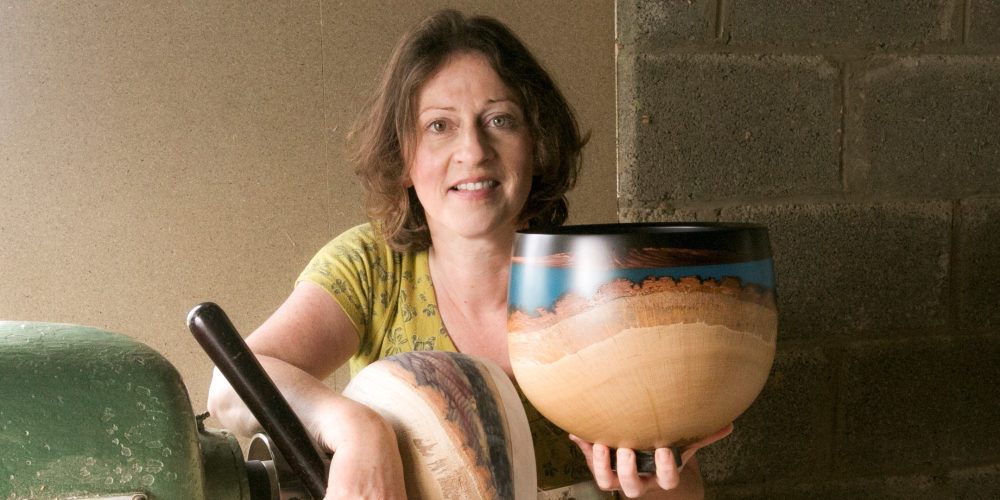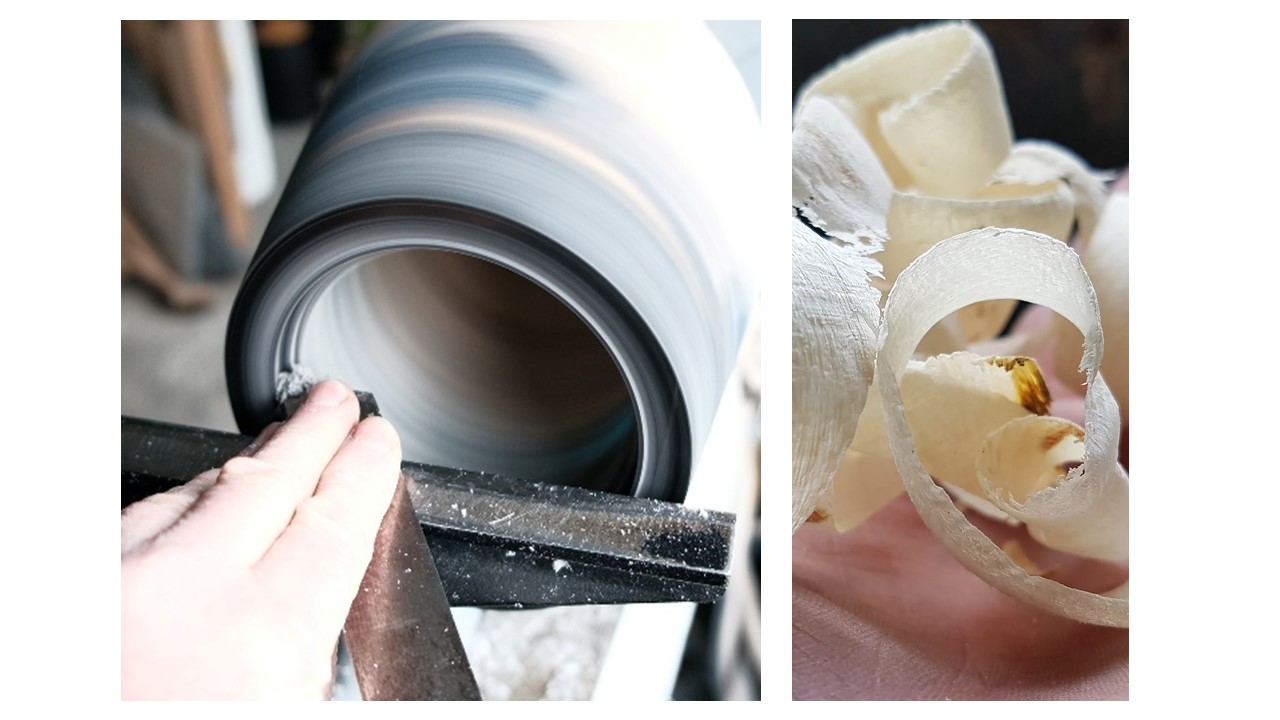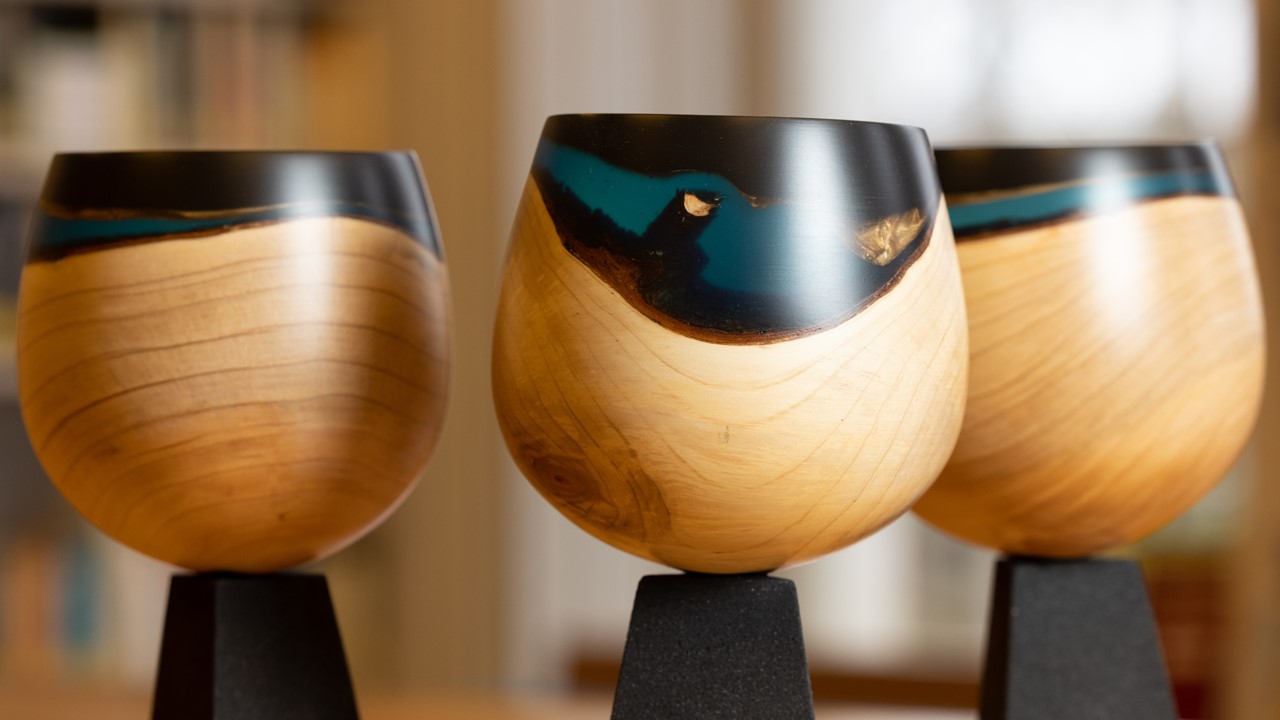
10 October, 2024

Author: Kathleen Walsh
Posted: 27 July, 2022
Irish artist Kathleen Walsh on the art of woodturning and how she made the award sculptures for the 2021 IRC Researcher of the Year Awards
I have always loved wood. It gives so much when the grain, faults and textures are revealed as it’s pared away.
I grew up Wexford in a wood working family. My Dad set up a furniture making business when we were young so we all grew up running in and out of the workshop, helping where we could. It was generally an all hands on deck situation (no matter how small the hands). It was at this time I learned about wood, the different types, how it behaves, looks, feels and finishes. The furniture was farmhouse style and there were many pieces to be cut, turned and sanded. The repetition of the work created the time for developing a real feel for the material and the tools.
I studied Sculpture at Waterford Institute of Technology in the late 1980s, graduating in 1992 and then moving to the Limerick School of Art & Design to study Education in Art & Design. Since 1997, I have worked as a Modelmaking & Design Technician at the Dún Laoghaire Institute of Art, Design and Technology (IADT). This is a role I have enjoyed very much and it has allowed to meet with so many talented makers and artists over the years, from students to colleagues, whom I find to be a constant inspiration.
While at IADT, I have also had the opportunity to develop and explore new technologies, such as digital and laser work along with the more basic fabrication skills, and to be exposed to new and innovative materials. It is a vibrant and exciting place to work and this helps to keep me motivated in my own practice.

Learning the basics of woodturning is not too difficult. You really only need three things to get started: a lathe of some sort, some tools to shape the wood and a way to sharpen those tools. I had a preoccupation with the vessel and rounded form when I began on the lathe (which is what led me to woodturning) and so had an idea about what I wanted to achieve. I will work with any type of wood including oak, sycamore, beech, cypress and yew.
I have to be careful to manage the sourcing of the wood as I need to be sure I have the time to process it before it’s lost to time and the elements as it splits and cracks. I have been lucky to work with trees that were felled on campus in IADT. I also keep in contact with local tree surgeons who let me know when they have something suitable for me.

Award sculptures for the 2021 IRC Researcher of the Year Awards
The IRC Researcher of the Year Awards pieces were taken through a series of processes before reaching the finished work. With my chain saw I cut the wood from a tree trunk to a size that the lathe can spin easily, making ready for the initial rough cut. The decisions that determine the finished piece are mostly all made at this stage in terms of colour, form and overall design. My decisions are informed by the qualities of the piece of wood itself as the first cut reveals the grain and any faults or knots that need to be considered.
The rough cut is left to dry for a number of weeks or months depending on the moisture content of the wood to start with. There is always a risk at this point of losing the piece, as the moisture leaves the wood it can crack and split, so it is best for this drying to happen slowly and gradually.
When dry enough I cast the resin layers onto the rim, keeping in mind that the coloured resins chosen for each piece are there to enhance and elevate the natural beauty of the wood, and to ensure that the wood remains the star of the show. Once the resin is set it is ready for the finish turning. It is sometimes easy to get lost in the techniques and lose sight of the qualities of your materials, so during the process I find it most helpful to always stay informed by the natural subtleties or strong features of the materials I use.
No tree or piece of wood is perfect. It is subject to defects from the time it emerges as a seedling to the last stages of seasoning. It moves, bends, shrinks, splits and needs to be managed either to take advantage of these traits or to prevent them. As an artist you have the choice to avoid wood with defects, as they can detract from the simple understated beauty of a form, or use and build upon the natural flaws of the wood and use them as a feature in themselves.
For more info on Kathleen Walsh and her work, visit her website.